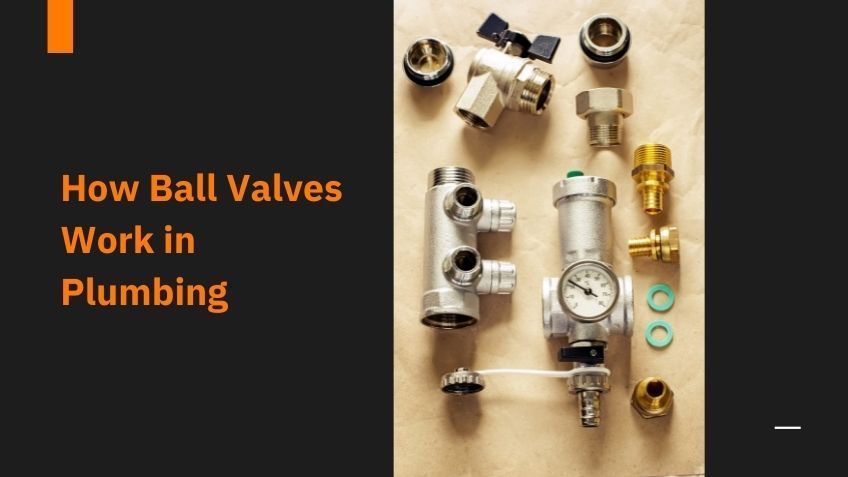
Plumbing requires not just skills and tools but also highly efficient machines. Ball valves have been supporting us in many ways if we look at. Moreover, to control fluid and gas, plumbers use multiple machines along with smart techniques. From pipes to valves, every component has a substantial worth in this industry. Similarly, ball valves have a unique function to control fluids and gases from one way to another. They regulate the flow in the simplest way with the least effort. Besides finding a high-quality ball valve, you need to know a little bit about it first. From knowing about its components to understanding how this simple valve works, there is a lot you can learn below.
These ball valves are composed of just a few components, which make it very convenient for you to control the flow of liquid/gas. Around six main components work precisely to hold the pressure of material passing through it.
It has a simple process where fluid or gas is passed through an inlet, and it leaves through an outlet. Between them, there is a valve, which contains a hollow ball to control that fluid. Likewise, above that ball, there is a handle to control that flow. If that handle is perpendicular to the pipe, it stops the flow, and when it is parallel to the pipe, it lets the fluid/gas flow. To understand better, you may learn with the below points.
The first step in installing a ball valve is to remove the old one and replace it with a new one. Make sure that the packing is tight before reinstalling the ball valve into its original location. The next step is to determine which way you want your flow control to open or close based on your design specifications. If you want it to open, then you will need to install an elbow (or tee) on one side of the ball valve body and an elbow (or tee) on the other side of the body. You can use the nipples on these elbows as markers for where you want your flow control system installed.
Once all of your markers have been placed, run an extension line from each marker until it reaches its destination on your system downstream from where it was originally connected with another pipe or component in your piping system. Then connect this extension line back up with its original connection point so that it becomes part of your pipe lining system.
There are various types of ball valves to cover different requirements in plumbing. Whether it is on a large or small scale, they can help you a lot.
To manage the high and low pressure of fluid/gas, this heavy-duty ball valve works the best. It has ball bearings along with a rotating wheel to provide a large amount of pressure to hold the content from passing it. It is widely common in industrial uses to cope with mega projects.
This type is used when two different sections need water inflow. Its name is a three-way ball valve because it has one inlet and two outlets. With the help of a three-way type, you can control the flow of water in two different ways.
Its cylindrical area is slightly larger than a standard ball valve. The main reason for using it is to decrease pressure drop. With the help of this type, you can have a better flow with the least friction inside the valve.
This one is very useful when you have problems with overflowing water from your tank. It is just a simple ball valve with an attached PVC ball to detect water level. Once the water level crosses the limit, this PVC ball turns the valve off.
Although it is very useful and easy to operate, it has some limitations. These limitations make it less useful in some fields, especially where you need adjustment in the flow. Likewise, there are two drawbacks of ball valves, which you need to know if you are going to install them.
It has a fixed movement, which is at 90 degrees. You can either let the flow go with the whole pressure or you can shut it; there is no in-between. You can’t use it for throttling or controlled flow as much as you need. Likewise, it has no adjustment of pressure, which makes it
Although it is useful for gas and less viscous liquids, it can’t provide assistance against thick liquids or slurries. The reason is the nature of those liquids because they can leave their residuals in this valve. It will result in corrosion and blockade in a valve, which can be problematic for you to clean.
These ball valves are available in different materials like brass, stainless steel, copper, and plastic. You can use them for simple control of water/gas flow in plumbing. In addition, make sure you use the right metal for the right usage because some gases and liquids have a strong impact on some metals.